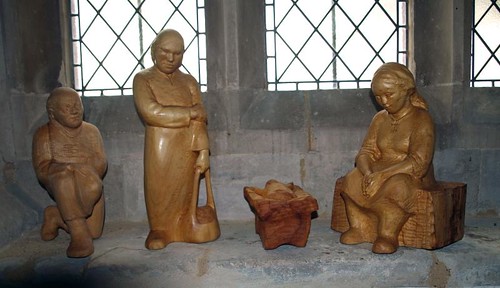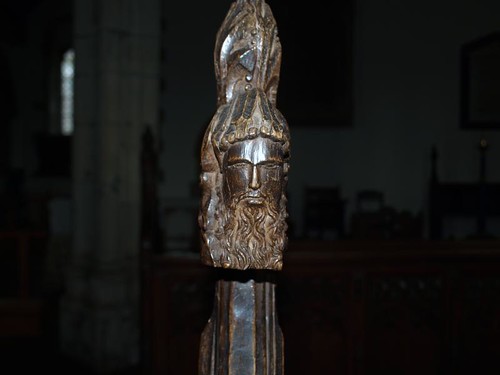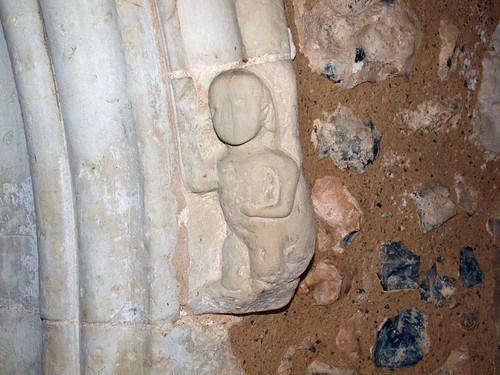SS PETER AND PAUL. Large flint church standing to the NE of the village. The exterior seems Perp, the interior tells of earlier history. Low W tower with spike, nave with clerestory and hipped roof at the E end (when was this unusual feature introduced? In the C18?). N and S aisles, S porch of two storeys with outer stair-turret, S chancel chapel, and lower chancel. Of all this nothing reveals motifs earlier than the C15 except the chancel E window of three cusped lancet lights under one two-centred arch. This is a motif of c. 1300 (renewed). And the masonry of the chancel must date back further still in the C13; for inside, the E window can be seen to have replaced simpler lancet windows. Even they, however, are not the oldest evidence in the church. Directly one has entered, one sees that the whole of the long even N and S arcades of six bays are of Transitional or E.E. date. Which of the two is it? There is no answer to the question. The truth as proved by this village church is that the Transitional overlap into the E.E. style was more considerable and important than is realized. All piers are circular, all arches of the same complex moulding which must be later than 1200, but of the capitals of piers and responds eight are scalloped with little bits of abstract decoration in the individual flutings and six have fully developed stiff-leaf, ranging from upright to diagonal. - The S chancel chapel opens into the chancel with finely moulded arches and a slim pier with the usual C15 section of four shafts in the main axes and four hollows in the diagonals. The S aisle roof is also c. 1500. - SCREEN. C15, broad divisions of four Lights each, with simple Perp tracery. The coving seems much renewed. - BENCHES. Some with poppy-heads. A few of them have little faces at the lower lobes of the poppy-head. - PAINTINGS. Remains of early C13 figures of angels in the jambs of the chancel lancets. - STAINED GLASS. S chancel chapel, Lord Chesham Memorial, 1885, with Morris influence. - PLATE. Chalice, 1635. - MONUMENTS. Brass to a woman with open hair, early C15 (chancel). - Thomas Brand, twentieth Baron Dacre, d. 1851 : an E.E. blank arch with stiff-leaf and dog-tooth decoration; no doubt the design of a notable architect.
Kimpton. We see the tiny lead spire of its church peeping over a group of old barns in a valley by the Bedfordshire border. The church is 13th century, with stiffly ornamented capitals on its 14th-century round pillars, but was much transformed in the 15th century, when the tower and the spire were added and the two-storeyed porch was built; it has a stone figure of a child on the doorway. To the same century belongs the roof over the south aisle borne by stone angels, and the beautiful arcade between the chancel and the chapel. The chapel has two medieval oak screens, one with a richly vaulted canopy, and poppyheads 500 years old. There is an angel in a medieval painting on the splay of one of the chancel windows, and a brass portrait of an unknown woman of the middle of the 15th century is let into the chancel floor. The priest’s desk is Jacobean, and is carved with symbolism of the fruitfulness of the earth; we noticed on it a bird pecking at a bunch of grapes. The east window has figures of Our Lord and the saints in memory of the 24th Baron Dacre and the second Viscount Hampden. Many of his family lie in the church, having been brought here from their home at Hoo, set in a beautiful park of 250 acres.



No comments:
Post a Comment